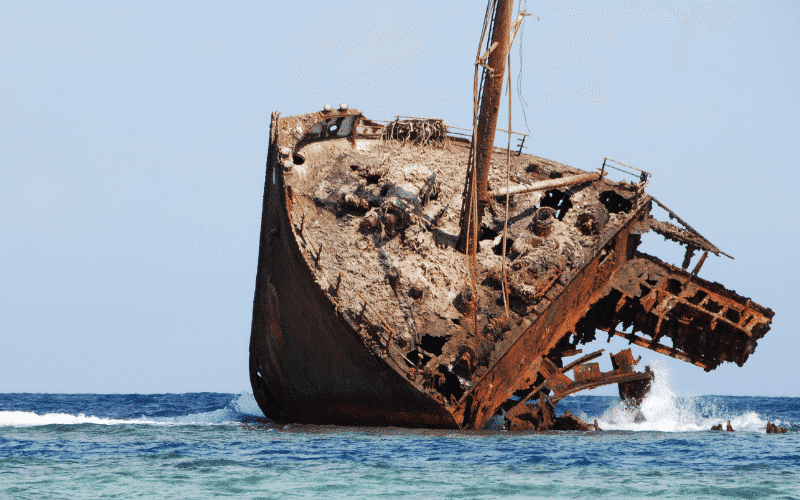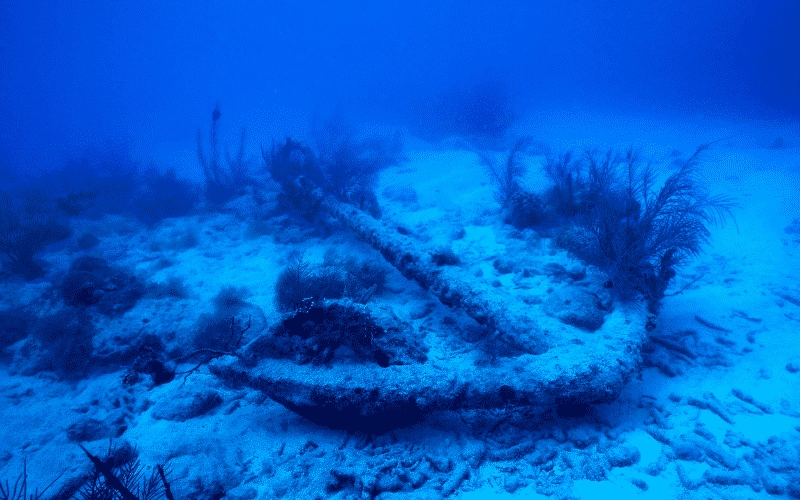

There are tons of mysterious places around the world both on land and in the water – that are difficult to explain logically. The legends of missing vessels and ghost ships drifting without their crew in these locations have made their synonyms to the mystery.
Though the notorious Bermuda triangle tops the list of most mysterious places on this planet, a number of other locations also remain mysterious as much as the former. The Devil’s Sea, also known as the Dragon’s Triangle, is one of such sailors’ nightmares in the waters around the world.
Located near the Japanese coast in the Pacific Ocean, the Devil’s Sea (Ma-no Umi in Japanese) is one of the twelve Vile Vortices located around the earth. Vile vortices are those areas where the pull of the planet’s electromagnetic waves is stronger than anywhere else. As the title indicates, the Dragon’s Triangle extends as a triangle between Japan and the Islands of Bonin, including a major portion of the Philippine Sea.
Geographically, the triangle is located around the Miyake, which is a Japanese island that lies around a hundred kilometres south of Tokyo. However, the exact location of the Devil’s Sea is disputed since several reports claim different distances to the area.
Some reports state that it is 110 km far from Japan’s east coast region, while another claims that it is located near Iwo Jima, a Japanese Volcano Island which is almost 1,200 km from the Japanese coast. Since the Devil’s Sea is not officially included in the map, the actual size and the perimeter of the notorious waters remain unknown.
The area has also been called the Pacific Bermuda Triangle, denoting its position that is precisely opposite to the Bermuda Triangle and the similarities in the “paranormal phenomena” of the area with that of the Bermuda Triangle.
Such an infamous reputation for this oceanic area has been not gained contemporarily but exists for decades and even centuries if some records are to be believed.
The area has been in news for several decades for unexplained incidences of vanishing of ships. According to the legends, the waters of the triangle are notorious for making even the strongest vessels disappear, along with the crew abroad.
It is said that the conqueror Kublai Khan, the fifth Great Khan of the Mongol Empire and the grandson of Genghis Khan, had tried to make inroads into Japan in 1274 and 1281 AD. However, on both attempts, he failed to invade the country after losing his vessels and 40,000 crew members abroad in this triangular area, reportedly due to typhoons.
As Kublai Khan and his army abandoned the plan to invade Japan, the Japanese believed that it’s God who sent the typhoons to save them from the enemies. Later, strengthening the truth behind the legend, the divers and marine archaeologists have found the remaining Mongol fleets from the region.
Another story doing the rounds tells the sighting of a mysterious lady sailing a vessel in the Devil’s sea in the early 1800s. It is said that the vessel resembled the traditional Japanese equipment for burning incense. However, the destination and identity of the vessel still remain a mystery.
In the later century, especially in the 1940s and 1950s, a number of fishing vessels and over five military vessels were disappeared in the sea, in an area that lies between Miyake Island and Iwo Jima.
As a result, Japan sent a research ship named Kaio Maru No.5 in 1952 to investigate the previously missing vessels that had been reported to have gone missing in the Dragon’s Triangle without any trace.
However, the research vessels with 31 crew members abroad also met the destiny of previous vessels which went to the Devil’s sea. The wreck of the Kaio Maru No.5 was recovered later, but the whereabouts of the crew members were never heard of again.
Following this incident, the Japanese government reportedly declared this area dangerous for marine voyaging and transporting goods. Moreover, as a result of this unprecedented incident, all efforts to unearth the facts behind the mystery were also aborted completely.


To begin with, the term dragon in the Devil Sea’s name originates from the Chinese fable about dragons existing below the water surface. According to these fables, the dragons under the sea attack vessels passing by to satiate their hunger. These fables have originated well before the AD period – 1000 BC era.
With their emphasis on the presence of mythical creatures like dragons, these fables have made a huge impact on the legends and mysterious stories created in the years to come.
Similarly, the Japanese name “Ma-No Umi,” which means the Sea of the Devil, was originally coined by the Japanese countrymen years ago when the stories of paranormal phenomena in the sea was popularised.
The superstitions associated with the Devil’s Sea always haunted the Japanese from venturing into this part of the ocean right from centuries past.
As the myths of the Devil’s Sea popularized through legends, there were also hypotheses, including the scientific explanations, attempting to solve the mystery. Several efforts were also made to understand the truth behind the so-called paranormal phenomenon.
Scholars like Ivan Sanderson have suggested that it is the hot and cold currents crossing this Vile Vortice leading to the disappearance of vessels in the Devil’s Sea. According to him, these currents result in electromagnetic disturbances that trap the ships passing by.
Another hypothesis suggested that it is the subsea volcanoes in the area that caused the disappearance of vessels. The eruptions from these volcanoes could have initiated such accidents, substantiating the stories of dragons sucking in ships and its crew to the ocean’s depths.
Due to the undersea volcanoes and seismic activities, according to marine scholars, the islands in the area often disappear suddenly, while new ones appear at the same pace.
Another scientific research claimed that the anomalies believed to occur in the triangle were the result of an environmental phenomenon. The researchers argued that the area has the presence of methane hydrates on the seabed.


When methane hydrates gas or methane clathrates explodes, bubbles will be formed on the water surface as the ice-like deposits separate from the bottom of the ocean at the time of the explosion. These activities can interrupt buoyancy and also destroy a vessel without even leaving a trace.
However, in 1989, American writer and paranormal activity theorist Charles Berlitz wrote a book, The Dragon’s Triangle, after detailed research on the paranormal activities in the Devil’s Sea. According to him, the accidents involving five Japanese military vessels in the triangle, due to the ‘evil’ nature of the sea, have resulted in the death of more than 700m people.
Later, questioning Charles arguments that substantiating the Devil’s Sea is a mythical area abound with paranormal activities; Larry Kusche published a book titled The Bermuda Triangle Mystery Solved in the year 1995. In his work, Kusche rejected the story of the disappearance of Japanese war ships, arguing that the vessels that went missing were fishing boats.
In his book, Kusche has also claimed that the research ship sent by the Japanese contained a crew of only 31 people as opposed to the 100 stated by Charles and the vessel was wrecked instead of disappearing completely.
He argued that the research vessel was wrecked by an undersea volcano in September 1952. The remains of the wreckage were retrieved by the Japanese a few years ago which further rejected Charles’s claims.
The Pacific Bermuda Triangle might be subjected to numerous theories and suppositions. But in spite of scientific evidence and the mythical aura surrounding the oceanic arena, its continued mysterious existence is a testimony that certain phenomena in the world are far beyond the control of human beings.
Disclaimer: The authors’ views expressed in this article do not necessarily reflect the views of The Marine Learners. Data and charts, if used, in the article have been sourced from available information and have not been authenticated by any statutory authority. The author and The Marine Learners do not claim it to be accurate nor accept any responsibility for the same. The views constitute only the opinions and do not constitute any guidelines or recommendation on any course of action to be followed by the reader.
The article or images cannot be reproduced, copied, shared or used in any form without the permission of the author and The Marine Learners.










We believe that knowledge is power, and we’re committed to empowering our readers with the information and resources they need to succeed in the merchant navy industry.
Whether you’re looking for advice on career planning, news and analysis, or just want to connect with other aspiring merchant navy applicants, The Marine Learners is the place to be.